12 Different Types of Salt For Cooking and When To Use Them
When it comes to cooking salt, there’s no cut-and-dry answer to which one you should use.
There are many different salts on the market—each boasting a unique texture, flavor, and mineral composition that can elevate your culinary creations.
Understanding these salt types empowers you to choose the best salt for cooking any dish, whether you’re hosting a dinner party or whipping up a weeknight meal for the family. Below, we’ll explore the different types of salt and their uses, health considerations, and best practices for storage and shelf-life—plus we’ll offer guidance on substituting one type for another. You’ll be able to cook like a chef at home in no time!
A Guide to Different Types of Salt For Cooking
Salt is an essential ingredient in preserving and flavoring food. The difference between good and great cooking often comes down to choosing the right salt. Below are 12 popular salt types to help you cook like a chef at home in no time!
1. Kosher Salt
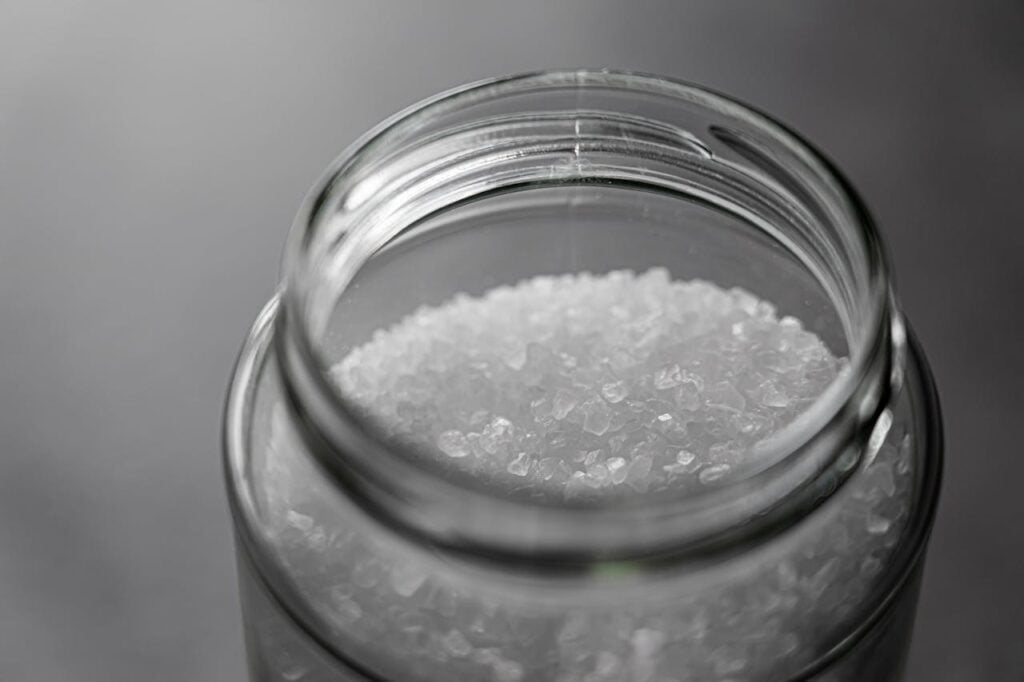
Kosher salt is a coarse-grained variety of salt that’s almost pure sodium chloride and typically not iodized. Its larger crystals make it a favorite for seasoning:
- Meats
- Poultry
- Salad
However, it’s usually not the best choice for baking because its flakes don’t dissolve as evenly as finer-grained options. Kosher salt often originates from rock salt deposits found worldwide.
Health & Mineral Content:
- Primarily sodium chloride, with minimal trace minerals.
- Less processed than many refined salts, but lacks added iodine.
Storage & Shelf Life:
- Store in an airtight container in a cool, dry place.
- Kosher salt can last indefinitely if properly sealed.
Substitution Tip:
- If a recipe calls for kosher salt and you only have fine table salt, reduce the amount slightly (start with about half) because table salt is denser.
2. Table Salt
Table salt is the most common type of salt—what most people think of as the “default.” This cooking salt is mined from underground salt deposits and then heavily processed.
- It contains anticaking agents and is often iodized to support thyroid health.
- It’s less natural than many different salts, lacking the trace minerals found in sea- or rock-based varieties.
Despite its lower mineral profile, table salt is versatile:
- Great for seasoning, cooking, and baking.
- Dissolves quickly and consistently.
Health & Mineral Content:
- Typically includes iodine, beneficial for thyroid function.
- Refined to remove most trace minerals.
Storage & Shelf Life:
- Keep in a sealed container; its anticaking agents help prevent clumping.
- Remains stable for years when stored properly.
Substitution Tip:
If you’re swapping in table salt for a recipe calling for coarse salt (like kosher), use about half or three-quarters of the amount to avoid oversalting.
3. Fleur De Sel
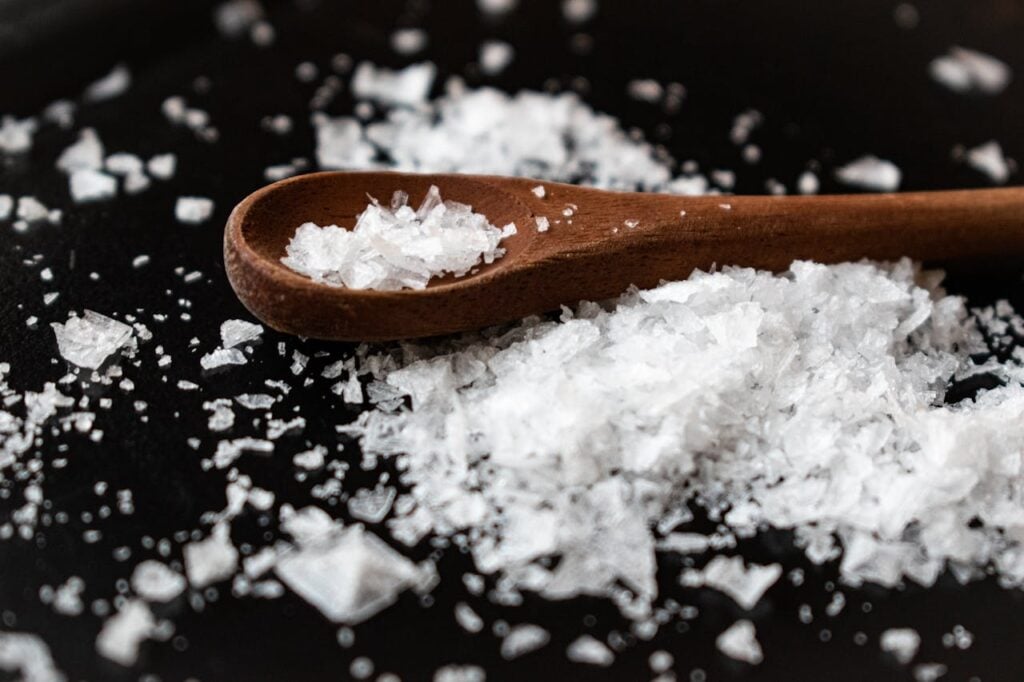
Fleur de Sel, meaning “Flower of the Sea,” is one of the world’s most esteemed salt types. It’s harvested by hand from the top layer of salt ponds—originally in Brittany, France, but now replicated in other coastal regions.
- Best used as a finishing salt due to its delicate crystals.
- Adds a refined crunch and briny flavor just before serving.
Health & Mineral Content:
- Retains trace minerals like magnesium and calcium.
- Lower sodium content compared to standard table salt per pinch, thanks to its flaky texture.
Storage & Shelf Life:
- Store in a cool, dry place in an airtight container.
- Its slightly higher moisture content means you should keep it away from humidity.
Substitution Tip:
If you need a finishing salt but can’t find Fleur de Sel, flake salt (like Maldon) is a suitable replacement for texture.
4. Sea Salt
Harvested by evaporating seawater, sea salt is typically less processed than table salt and many other types of salt for cooking. Because of its irregular flakes, sea salt is:
- Good for finishing or sprinkling on dishes like roasted vegetables or grilled meats.
- Sometimes retains trace minerals, which can slightly alter flavor and color.
Health & Mineral Content:
- May contain calcium, magnesium, or potassium from the ocean.
- Sodium content is similar to table salt. However, its coarser texture means you might use less.
Storage & Shelf Life:
- Keep sea salt sealed to avoid clumping from moisture.
- It can last indefinitely when stored properly.
Substitution Tip:
Sea salt can often replace Kosher salt in a 1:1 ratio if the textures are similar.
5. Celtic Sea Salt
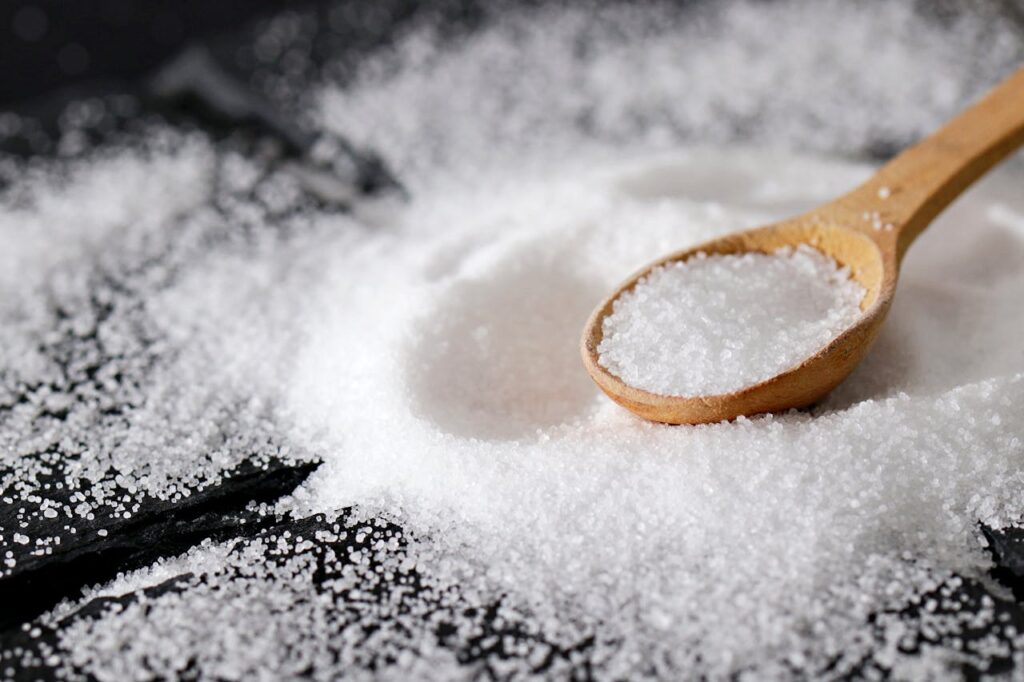
Also called “Sel Gris,” Celtic sea salt is produced off the coast of France. It’s known for its chunky, greyish texture which comes from the clay in salt flats.
- A popular choice for seasoning meats or pickling due to its robust mineral profile.
- Often used in brining mixtures.
Health & Mineral Content:
- Contains a balanced spectrum of trace minerals.
- Believed by some to support healthy blood pressure and electrolyte levels.
Storage & Shelf Life:
- Its higher moisture content benefits from an airtight container.
- Can clump if exposed to humid conditions—simply break it up to reuse.
Substitution Tip:
- If you’re out of Celtic sea salt, coarse sea salt or kosher salt can offer a similar texture in brines or rubs.
Not sure which protein to use with this salt? You can opt for a customizable meal delivery service. This will cater to your needs and even offer recipes to inspire your choices. We recommend comparing meal delivery vs. grocery shopping to determine whether getting meals delivered is right for you.
6. Flake Salt
Flake salt is formed by compressing salt crystals into thin, irregular flakes. This can be done through various production methods, from simple solar evaporation to more complex processes.
- Perfect for adding a crunchy finishing texture.
- Commonly used in recipes needing a final pop of flavor.
Health & Mineral Content:
- Typically lower in trace minerals than unrefined salts, but not as stripped as table salt.
- Sodium content is akin to other sea salts.
Storage & Shelf Life:
- Keep flake salt sealed tightly—its light, airy structure can clump if exposed to moisture.
- It remains usable for years when stored properly.
Substitution Tip:
If you don’t have flake salt, Fleur de Sel or another finishing salt can provide a similar mouthfeel.
7. Pink Salt
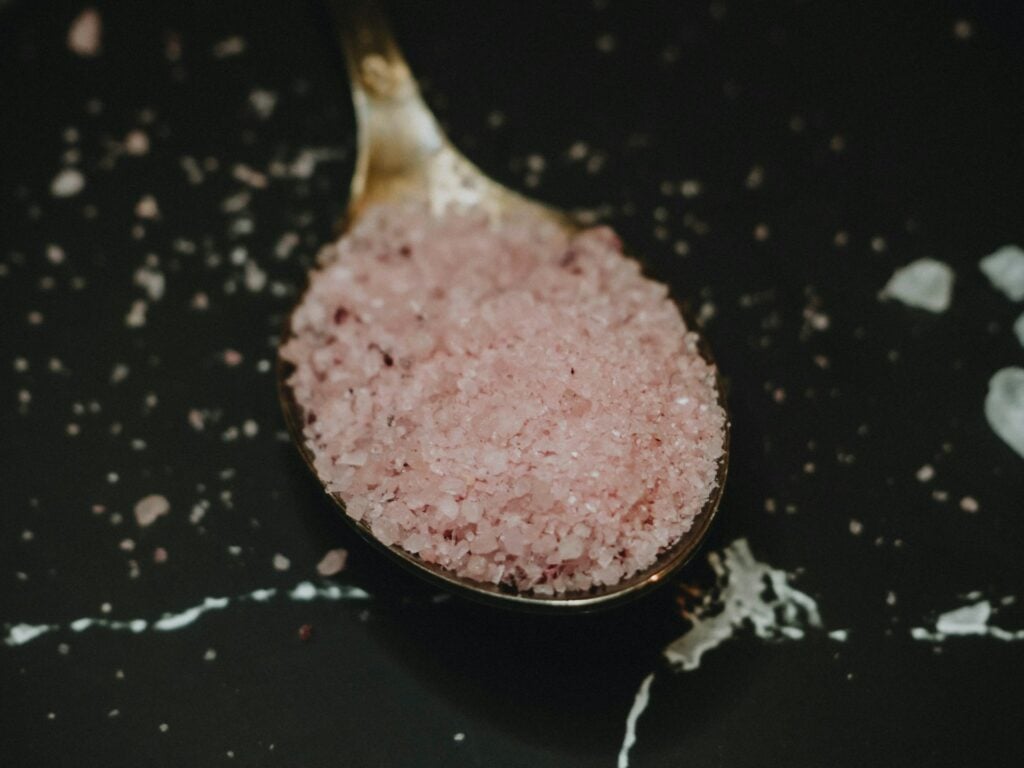
Pink salt is sourced from rock crystals in or near the Himalayan region. Its rosy hue comes from iron and other trace minerals like zinc and potassium.
- Offers a saltier kick than some other salt varieties, so a little goes a long way.
- Lovely as a finishing salt or in sauces, marinades, or decorative salt grinders.
Health & Mineral Content:
- Rich in trace minerals and often touted for potential health benefits (for example, balanced electrolytes).
- Sodium content is high, so measure carefully. According to WebMD, too much sodium can cause high blood pressure and heart conditions.
Storage & Shelf Life:
- Store in a grinder or airtight jar to prevent moisture buildup.
- Pink salt can last indefinitely if kept cool and dry.
Substitution Tip:
- You can generally substitute pink salt for kosher salt in a 1:1 ratio if it’s similarly coarse. Adjust to taste due to its distinct flavor.
Additionally, pink salt can be a valuable addition to any meal kit. It provides greater appeal due to its pink color and a saltier taste compared to table salt.
8. Red Salt (Alaea Salt)
Red salt, also known as “Alaea salt,” hails from Hawaii. It’s infused with red volcanic clay (Alaea), which provides its signature color.
Pair it with a white-colored dish and with other must-have spices in your pantry. It is also a great flavoring ingredient, and it is awesome for sautéing and roasting.
- Mildly salty with a delicate flavor.
- Excellent for seasoning and preserving meats or fish.
Health & Mineral Content:
- Rich in iron oxide and other minerals.
- Offers a subtle nutrient boost compared to refined salts.
Storage & Shelf Life:
- Store in a sealed container to prevent moisture-related clumping.
- Color and flavor remain stable over time when kept dry.
Substitution Tip:
For a similar mild tang and visual appeal, you could use pink salt or another colored salt if red salt is unavailable.
9. Black Salt (Kala Namak)
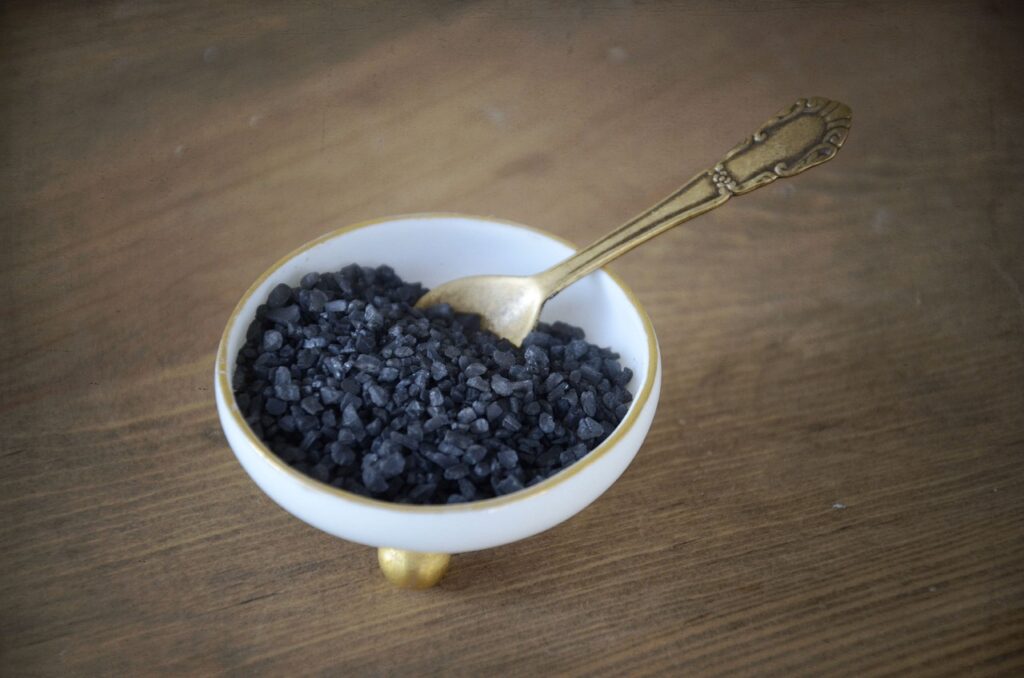
Kala Namak, often called “black salt,” comes from volcanic rock near the Himalayas (commonly in Pakistan).
- Known for its pungent sulfuric aroma and bold flavor.
- Enhances curries, spicy dishes, pickles, and salads in small doses.
Health & Mineral Content:
- Contains iron, magnesium, and calcium, along with sulfur compounds that lend a strong flavor.
- Often used in Ayurvedic medicine for digestive health.
Storage & Shelf Life:
- Store tightly sealed to preserve its unique aroma.
- Remains potent for several years when kept away from humidity.
Substitution Tip:
If a recipe calls for black salt’s tangy flavor, consider blending standard sea salt with a pinch of sulfur-rich seasoning (like mustard powder) as a stand-in. The flavor won’t be identical but can come close.
10. Black Lava Salt
Black lava salt is harvested in regions like Hawaii and Cyprus, then mixed with activated charcoal from lava deposits.
- Adds a dramatic dark hue to your dish.
- Activated charcoal can help with digestion, but it’s best enjoyed sparingly.
Health & Mineral Content:
- Contains charcoal, which some believe aids digestion and detoxification.
- High sodium chloride content like other sea salts.
Storage & Shelf Life:
- Keep it well-sealed to avoid moisture absorption.
- Lasts for years under the right conditions.
Substitution Tip:
If you need the bold presentation, pink salt or red salt can add visual flair. The flavor profile won’t be the same, but it still offers color contrast.
11. Brining Salts
Brining involves soaking foods—especially meats—in salt-infused water to enhance moisture and tenderness. It’s a cooking hack that saves time in the kitchen so you can spend more time enjoying your meal!
- Kosher salt, sea salt, or pink salt can serve as brining salts.
- Draws out and redistributes moisture within proteins, boosting juiciness.
Health & Mineral Content:
- Varies based on which salt you choose.
- Brining helps preserve some nutritional aspects of meats by preventing them from drying out.
Storage & Shelf Life:
- Any salt used for brining should be stored in a clean, dry container.
- Because it’s used in solution, clumping isn’t a concern, but always keep leftover salt separate from any used brining liquid.
Substitution Tip:
A general rule: 1 cup kosher salt = about 1 cup coarse sea salt = about ½ to ¾ cup table salt in brining solutions (taste test to confirm).
12. Flavored Salts
Flavored salts combine a base salt (often flake or sea salt) with herbs, spices, or other flavor enhancers.
- Ideal for adding quick bursts of flavor to meats, poultry, fish, or veggies.
- Convenient for finishing dishes when you don’t want to gather multiple seasonings.
Health & Mineral Content:
- Reflects the base salt’s mineral profile plus any added herbs/spices.
- Salt quantity can be significant—use with moderation if you’re watching sodium intake.
Storage & Shelf Life:
- Keep in airtight containers away from heat and sunlight.
- Most flavored salts stay fresh for at least 6–12 months before spices lose potency.
Substitution Tip:
If a recipe calls for a specific flavored salt, replicate it by mixing a pinch of your chosen herb/spice blend into sea salt or kosher salt.
Answering Your Salt FAQs
Curious about salt? Let’s explore some of the most common questions about this ingredient.
1. What is the Best Salt for Cooking Everyday Meals?
We recommend kosher salt due to its versatility and moderate flavor. The coarse grains are easy to pinch, offering precise control when seasoning. Plus, kosher salt dissolves well in most dishes.
2. Can I Substitute Different Types of Salt in Recipes?
Absolutely—but be mindful of both texture and salinity. Fine table salt is denser than coarse sea salt, so start by using less if substituting. Pay attention to how each salt’s mineral content might subtly affect the flavor. For more tips on picking the right cooking salt, you can also experiment with different salts in small test batches.
3. How Should I Store Different Types of Salt?
Most salts—whether table, kosher, or sea—should be stored in a cool, dry place to prevent clumping. Specialty salts like Fleur de Sel or Celtic sea salt thrive in airtight containers that help maintain their moisture levels and unique textures.
Shelf Life Tip: Salt doesn’t technically expire, but its quality and flavor can diminish if it’s exposed to humidity. Keep it sealed for optimal taste and texture.
4. Do Different Types of Salt and Their Uses Affect Health?
In moderation, salt is essential for hydration and overall health, helping maintain electrolyte balance. Certain salt types, such as Himalayan pink salt or Celtic sea salt, offer trace minerals that may support various bodily functions.
However, the differences are generally subtle, so it’s still best to focus on overall sodium intake. If you have high blood pressure or other dietary concerns, consult your healthcare provider before adding extra salt to your meals.
Find The Best Type of Salt For Cooking
As you can see, each type of salt has its own unique texture and flavor profile. While salt is generally safe to use, you should be aware of the best types of salt for cooking. Also, consider how they affect the taste of the food.
Whether you’re cooking for one or for many, know your salts! Understanding how to use the best salt for each recipe is one way to make stress-free chef-quality meals.
Looking to spice up your Gobble recipes? Don’t forget to experiment with different types of salt and their uses for cooking.



